Subacromial decompression is a widely used surgical option for treating shoulder impingement, but it may not be the best fit for every patient. Whether due to medical contraindications, personal preferences, or mild symptoms, some individuals explore alternative treatments. Advances in medical technology and therapy have also introduced emerging techniques for managing shoulder impingement non-surgically or with less invasive interventions.
This article reviews the key alternatives to subacromial decompression, including conservative treatments, other surgical procedures, and innovative therapies.
Non-Surgical Alternatives
Many cases of shoulder impingement can be effectively managed without surgery, particularly in early or moderate stages of the condition. Non-surgical approaches focus on reducing inflammation, restoring mobility, and strengthening the shoulder to relieve symptoms.
- Physical Therapy
Physical therapy remains the cornerstone of conservative treatment for shoulder impingement. A targeted therapy plan can alleviate symptoms and restore function by:
- Strengthening the rotator cuff and scapular muscles to stabilize the shoulder.
- Improving posture and correcting movement patterns to avoid impingement.
- Increasing flexibility and range of motion with stretching and mobility exercises.
Pros: Non-invasive, tailored to individual needs, and effective for many patients.
Cons: Requires consistency and time commitment to achieve results.
- Corticosteroid Injections
Steroid injections into the subacromial space can reduce inflammation and provide temporary relief from pain. This option is often used for patients with acute flare-ups or those who cannot immediately commit to surgery or therapy.
Pros: Rapid pain relief; minimally invasive.
Cons: Relief is temporary, and repeated injections may weaken tendons or cause side effects.
- Non-Steroidal Anti-Inflammatory Drugs (NSAIDs)
NSAIDs, such as ibuprofen or naproxen, help reduce inflammation and alleviate pain in the shoulder. These medications are often combined with physical therapy.
Pros: Readily available and easy to use.
Cons: May not address the root cause of impingement; prolonged use can lead to gastrointestinal or cardiovascular side effects.
- Shockwave Therapy
Extracorporeal shockwave therapy (ESWT) uses high-energy sound waves to stimulate healing in the affected shoulder area. It can reduce inflammation and pain in the tendons and surrounding tissues.
Pros: Non-invasive and effective for certain patients.
Cons: May require multiple sessions and isn’t universally effective for severe cases.
- Activity Modification
Adjusting daily habits, avoiding repetitive overhead movements, and practicing ergonomic techniques can reduce strain on the shoulder.
Pros: Simple, cost-effective, and preventive.
Cons: Requires vigilance and may limit certain activities.
Minimally Invasive Alternatives
For patients seeking less invasive options than subacromial decompression, several minimally invasive procedures are available. These approaches often involve arthroscopy but focus on different treatment methods.
- Subacromial Bursa Injection and Lavage
This procedure involves injecting fluid into the subacromial bursa to reduce inflammation and flush out irritants.
Pros: Simple and minimally invasive.
Cons: Provides temporary relief rather than long-term solutions.
- Arthroscopic Rotator Cuff Repair
If shoulder impingement is accompanied by a rotator cuff tear, arthroscopic repair may be a better alternative. This procedure involves repairing the torn tendon while addressing impingement-related issues.
Pros: Treats underlying structural problems.
Cons: Recovery may take longer than subacromial decompression alone.
- Capsular Release for Frozen Shoulder
In cases of concurrent adhesive capsulitis (frozen shoulder), arthroscopic capsular release may be performed to free up the joint. This procedure addresses stiffness and limited range of motion.
Pros: Improves mobility and reduces pain.
Cons: Requires skilled surgeons and dedicated physical therapy post-procedure.
Emerging Treatments for Shoulder Impingement
Ongoing research and technological advancements have led to the development of innovative treatments for shoulder impingement. These techniques aim to reduce the invasiveness of interventions while improving outcomes.
- Platelet-Rich Plasma (PRP) Therapy
PRP therapy involves injecting concentrated platelets from the patient’s own blood into the affected area. These platelets release growth factors that promote tissue healing and reduce inflammation.
Pros: Natural and minimally invasive; potential for long-term healing.
Cons: Requires multiple sessions and is not always covered by insurance.
- Stem Cell Therapy
Stem cell injections aim to regenerate damaged tissues in the shoulder. This technique is still in experimental stages but shows promise for treating tendon injuries associated with impingement.
Pros: Potential to repair tissues and avoid surgery.
Cons: Limited availability and high cost; results vary.
- Ultrasound-Guided Needle Fenestration
This technique uses ultrasound to guide a needle to the affected tendon or bursa, where small holes are created to stimulate healing.
Pros: Minimally invasive and effective for chronic cases.
Cons: May not address severe structural issues.
When to Consider Alternatives
Patients may consider alternatives to subacromial decompression surgery if they:
- Have mild to moderate symptoms that respond well to conservative treatments.
- Prefer to avoid surgical intervention or have medical contraindications to surgery.
- Are interested in exploring new or emerging therapies with their healthcare provider.
FAQs
- Can shoulder impingement resolve without surgery?
Yes, many cases improve with physical therapy, activity modification, and anti-inflammatory treatments. - Are alternative treatments as effective as surgery?
For mild to moderate impingement, non-surgical alternatives can be highly effective. Surgery is often reserved for severe or refractory cases. - Is PRP therapy proven to work for shoulder impingement?
PRP therapy shows promise but requires further research to establish its effectiveness compared to traditional treatments. - How do I know which treatment is right for me?
Consult with a healthcare provider to evaluate your symptoms, imaging results, and treatment goals. A personalized plan will provide the best outcomes. - Can I combine treatments for better results?
Yes, many patients benefit from a combination of therapies, such as physical therapy and corticosteroid injections, to address pain and underlying issues.
Subacromial decompression is an effective treatment for shoulder impingement, but alternatives can offer relief for those seeking non-surgical or less invasive options. From physical therapy and injections to cutting-edge regenerative treatments, there are numerous paths to recovery. By consulting with a healthcare provider, patients can explore the best approach to alleviate symptoms and regain full shoulder functionality.
